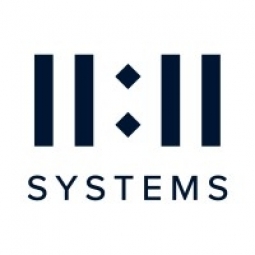Customer Company Size
Large Corporate
Region
- Europe
Country
- United Kingdom
Product
- 11:11 Backup for Veeam Cloud Connect
Tech Stack
- Veeam Cloud Connect
- 11:11 Cloud Console
Implementation Scale
- Enterprise-wide Deployment
Impact Metrics
- Cost Savings
- Digital Expertise
Technology Category
- Infrastructure as a Service (IaaS) - Cloud Storage Services
Applicable Industries
- Retail
Applicable Functions
- Business Operation
Services
- Cloud Planning, Design & Implementation Services
About The Customer
Lush is a British cosmetics retailer that specializes in bath, body, skin, and hair care products. The company was founded in 1995 and is headquartered in Poole, United Kingdom. Lush operates 951 retail locations across 49 countries. The company is well known for its commitment to products that are fresh, effective, ethically-sourced, cruelty-free, vegetarian, handmade, and low-waste. With the company and its data growing at a rapid pace, Lush needed a backup solution that was cost-effective, flexible, scalable, and easy to implement.
The Challenge
Lush, a British cosmetics retailer, was facing a challenge with its backup needs. The company was growing rapidly, and its data was expanding at the same pace. The existing backup solution was becoming increasingly costly to maintain and required the use of different third-party technologies. The goal was to lower costs and standardize around Veeam, which Lush was already using on premises. The company needed a solution that was cost-effective, flexible, scalable, and easy to implement. They also wanted to ensure secure and reliable access to their data.
The Solution
Lush turned to 11:11 Systems for their Backup for Veeam Cloud Connect solution. This provided a fully integrated, secure solution for no-compromise data protection that is managed through a unified console. The solution came at a fifth of the cost of their existing solution. In addition to cost savings, the solution provided increased security. With 11:11 Secure Cloud Backup, Lush now has a reliable safety net for a range of potential data loss events, including malicious or accidental deletions, hardware failures, and cybercrime. The 11:11 Cloud Console provided increased monitoring, control, and visibility. 11:11 Systems also provided dedicated on-boarding and 24x7x365 support along with committed account managers.
Operational Impact
Quantitative Benefit

Case Study missing?
Start adding your own!
Register with your work email and create a new case study profile for your business.
Related Case Studies.

Case Study
Improving Production Line Efficiency with Ethernet Micro RTU Controller
Moxa was asked to provide a connectivity solution for one of the world's leading cosmetics companies. This multinational corporation, with retail presence in 130 countries, 23 global braches, and over 66,000 employees, sought to improve the efficiency of their production process by migrating from manual monitoring to an automatic productivity monitoring system. The production line was being monitored by ABB Real-TPI, a factory information system that offers data collection and analysis to improve plant efficiency. Due to software limitations, the customer needed an OPC server and a corresponding I/O solution to collect data from additional sensor devices for the Real-TPI system. The goal is to enable the factory information system to more thoroughly collect data from every corner of the production line. This will improve its ability to measure Overall Equipment Effectiveness (OEE) and translate into increased production efficiencies. System Requirements • Instant status updates while still consuming minimal bandwidth to relieve strain on limited factory networks • Interoperable with ABB Real-TPI • Small form factor appropriate for deployment where space is scarce • Remote software management and configuration to simplify operations

Case Study
How Sirqul’s IoT Platform is Crafting Carrefour’s New In-Store Experiences
Carrefour Taiwan’s goal is to be completely digital by end of 2018. Out-dated manual methods for analysis and assumptions limited Carrefour’s ability to change the customer experience and were void of real-time decision-making capabilities. Rather than relying solely on sales data, assumptions, and disparate systems, Carrefour Taiwan’s CEO led an initiative to find a connected IoT solution that could give the team the ability to make real-time changes and more informed decisions. Prior to implementing, Carrefour struggled to address their conversion rates and did not have the proper insights into the customer decision-making process nor how to make an immediate impact without losing customer confidence.

Case Study
Digital Retail Security Solutions
Sennco wanted to help its retail customers increase sales and profits by developing an innovative alarm system as opposed to conventional connected alarms that are permanently tethered to display products. These traditional security systems were cumbersome and intrusive to the customer shopping experience. Additionally, they provided no useful data or analytics.

Case Study
Ensures Cold Milk in Your Supermarket
As of 2014, AK-Centralen has over 1,500 Danish supermarkets equipped, and utilizes 16 operators, and is open 24 hours a day, 365 days a year. AK-Centralen needed the ability to monitor the cooling alarms from around the country, 24 hours a day, 365 days a year. Each and every time the door to a milk cooler or a freezer does not close properly, an alarm goes off on a computer screen in a control building in southwestern Odense. This type of alarm will go off approximately 140,000 times per year, equating to roughly 400 alarms in a 24-hour period. Should an alarm go off, then there is only a limited amount of time to act before dairy products or frozen pizza must be disposed of, and this type of waste can quickly start to cost a supermarket a great deal of money.

Case Study
Supermarket Energy Savings
The client had previously deployed a one-meter-per-store monitoring program. Given the manner in which energy consumption changes with external temperature, hour of the day, day of week and month of year, a single meter solution lacked the ability to detect the difference between a true problem and a changing store environment. Most importantly, a single meter solution could never identify root cause of energy consumption changes. This approach never reduced the number of truck-rolls or man-hours required to find and resolve issues.




